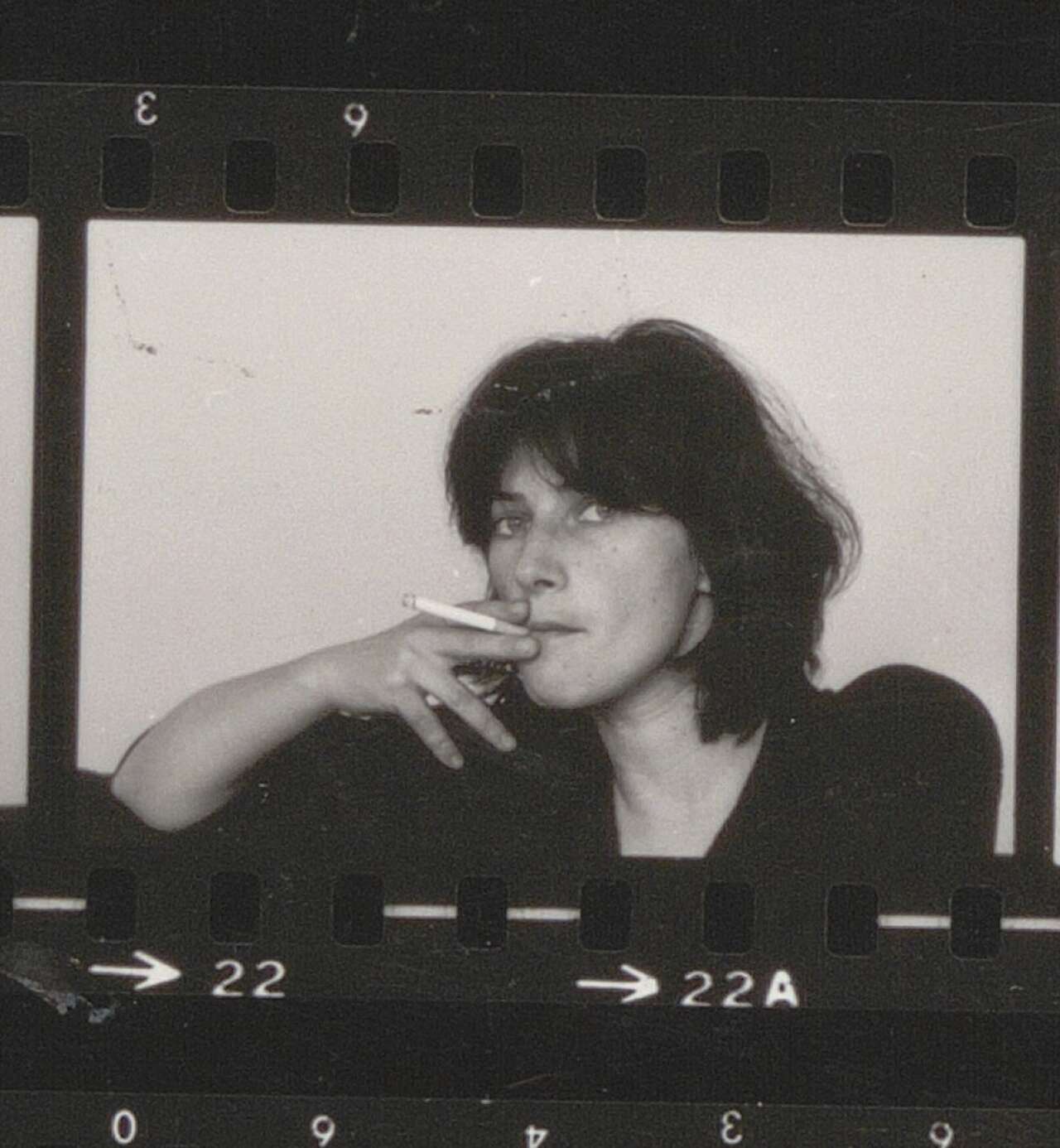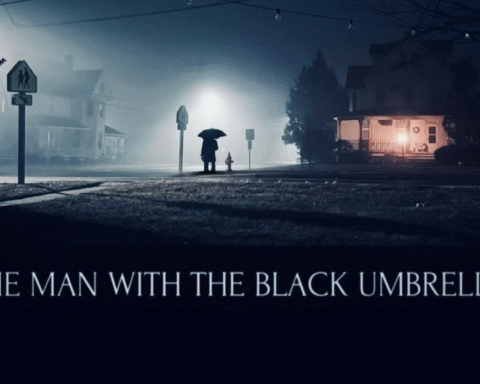In the dim-lit corridors of experimental cinema, where shadows dance with light and narrative conventions unravel like delicate threads, Chantal Akerman emerges as an incandescent figure. Her films, both haunting and hypnotic, traverse the labyrinthine complexities of human existence, exuding a profound sense of introspection and existential ennui. Akerman’s oeuvre, a veritable tapestry of temporal dissonance and visual austerity, beckons the viewer into a contemplative realm where the mundane metamorphoses into the sublime.
The Cinematic Alchemy of Akerman
Akerman’s films are a confluence of meditative stillness and profound movement, where each frame is meticulously crafted to evoke a visceral response. Her magnum opus, Jeanne Dielman, 23 Quai du Commerce, 1080 Bruxelles (1975), stands as a monumental testament to her cinematic philosophy. Through the quotidian rituals of its protagonist, Akerman encapsulates the silent scream of domesticity, rendering the banal with an almost sacred reverence. The film’s languorous pace and prolonged takes subvert traditional narrative structures, creating a rhythmic cadence that mirrors the ebb and flow of everyday life.
In News from Home (1977), Akerman juxtaposes the personal with the impersonal, interweaving her mother’s letters from Belgium with stark, lingering shots of New York City. This juxtaposition engenders a poignant exploration of displacement and alienation, where the urban landscape becomes a silent witness to the protagonist’s internal turmoil. The film’s experimental form, eschewing conventional dialogue and plot, elevates it to a realm where the visual becomes the primary vessel of storytelling.

Cinematic Time and Spatial Dynamics
Akerman’s manipulation of cinematic temporality and spatiality constitutes a cornerstone of her experimental approach. Her films often employ a durational aesthetic, characterized by extended takes and a deliberate pacing that invites the viewer to engage with time in an introspective manner. This durational approach subverts the conventional cinematic temporality, offering a counter-narrative to the frenetic pace of mainstream cinema.
In Jeanne Dielman, 23 Quai du Commerce, 1080 Bruxelles, the meticulous depiction of the protagonist’s daily routines—peeling potatoes, cleaning, cooking—unfolds in real-time, engendering a sense of temporal elongation. The extended duration of these scenes compels the viewer to experience time as an almost tactile entity, each moment laden with an existential weight. This manipulation of time serves to heighten the film’s exploration of domesticity and the latent tensions that underpin the protagonist’s existence.
Spatial dynamics in Akerman’s films are equally significant, with her use of space often functioning as a narrative device in itself. The stark, minimalist interiors of Jeanne Dielman reflect the protagonist’s internal confinement, the claustrophobic domestic space mirroring her psychological entrapment. In News from Home, the vast, impersonal urban landscapes of New York City contrast starkly with the intimate, personal nature of the letters from Akerman’s mother, creating a poignant tension between proximity and distance.
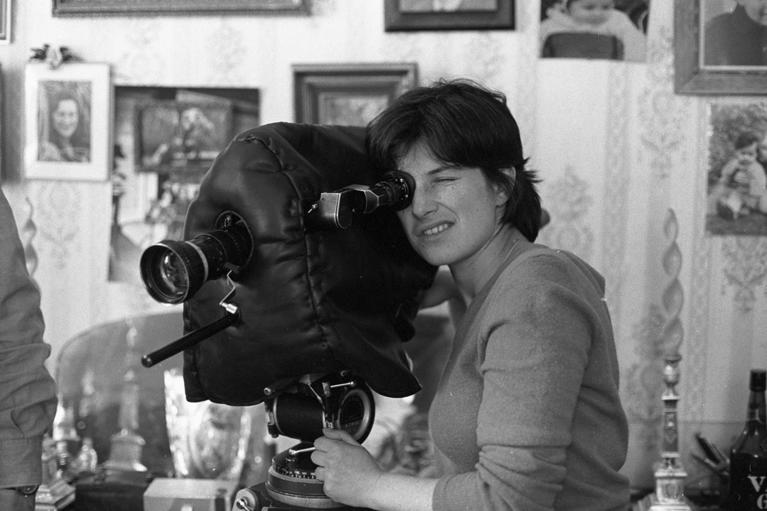
The Feminine Perspective in Experimental Cinema
Akerman’s work is indelibly marked by her exploration of feminine subjectivity, challenging the androcentric gaze that has long dominated cinematic discourse. Her films, imbued with a subtle yet potent feminist ethos, delve into the intricate interplay of identity, space, and autonomy. By foregrounding the experiences and perspectives of women, Akerman carves out a space within experimental cinema that is both revolutionary and revelatory.
Saute ma ville (1968), Akerman’s audacious debut, is a paradigmatic example of her subversive approach. The short film, with its frenetic energy and anarchic undertones, deconstructs the domestic sphere, transforming the kitchen—a traditional locus of feminine subjugation—into a site of rebellion and liberation. Akerman herself occupies the screen, her exuberant, almost manic performance a radical assertion of presence and agency.
In Les Rendez-vous d’Anna (1978), Akerman delves deeper into the labyrinth of female subjectivity, crafting a narrative that is both introspective and elliptical. The film’s protagonist, Anna, navigates a series of transient encounters and fleeting connections, her journey a poignant meditation on solitude and dislocation. Through its fragmented structure and minimalist aesthetic, the film encapsulates the essence of the experimental, eschewing resolution in favor of perpetual inquiry.

The Dialectics of Silence and Sound
Akerman’s cinematic lexicon is marked by a nuanced interplay between silence and sound, with both elements employed to profound effect. Her films often feature prolonged silences, which serve to heighten the emotional resonance of the narrative and to create a space for introspection. These silences are not mere absences of sound, but rather, they are imbued with a palpable tension and an underlying sense of unease.
In Jeanne Dielman, 23 Quai du Commerce, 1080 Bruxelles, the pervasive silence that envelops the protagonist’s daily routines accentuates the monotony and isolation of her existence. The sporadic intrusion of diegetic sounds—the clinking of dishes, the hum of appliances—punctuates the silence, creating a rhythmic pattern that mirrors the cyclical nature of her life. This use of sound and silence not only enhances the film’s atmospheric quality but also serves as a commentary on the protagonist’s unspoken despair.
Conversely, in News from Home, the ambient sounds of the city—traffic, footsteps, the murmur of voices—create a constant auditory backdrop that contrasts with the intimate, personal nature of the letters from Akerman’s mother. This juxtaposition of sound and silence underscores the film’s exploration of displacement and the dichotomy between the public and the private spheres.
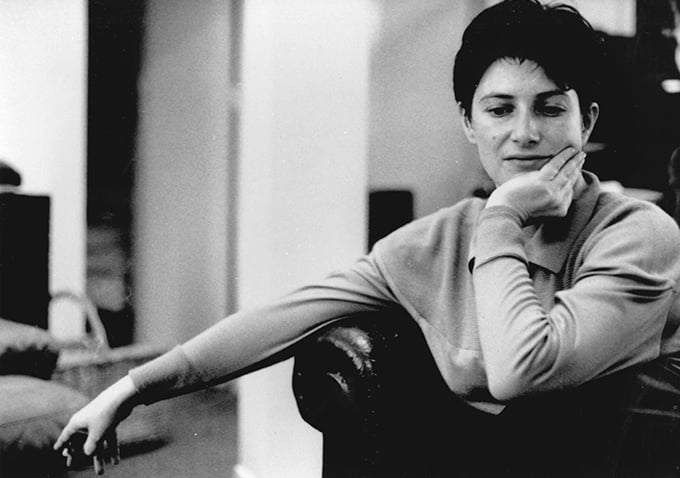
Autobiography and Fiction: Blurring the Boundaries
Akerman’s films often inhabit a liminal space between autobiography and fiction, blurring the boundaries between the personal and the universal. Her exploration of this interstitial realm allows her to delve into themes of memory, identity, and belonging, creating a richly textured narrative that resonates on multiple levels.
In Je, Tu, Il, Elle (1974), Akerman’s semi-autobiographical approach is evident, with the film’s fragmented structure and episodic narrative reflecting the disjointed nature of memory and self-perception. The protagonist’s journey, both physical and emotional, is depicted with a raw, unfiltered intimacy that blurs the line between the real and the imagined. This fusion of autobiography and fiction creates a complex, multi-layered narrative that invites the viewer to engage with the film on a deeply personal level.
News from Home further exemplifies Akerman’s exploration of the autobiographical, with the letters from her mother serving as a poignant counterpoint to the impersonal urban landscapes of New York City. The film’s documentary-like aesthetic and its introspective tone create a sense of authenticity and immediacy, blurring the line between the filmmaker’s personal experiences and the broader themes of displacement and alienation.
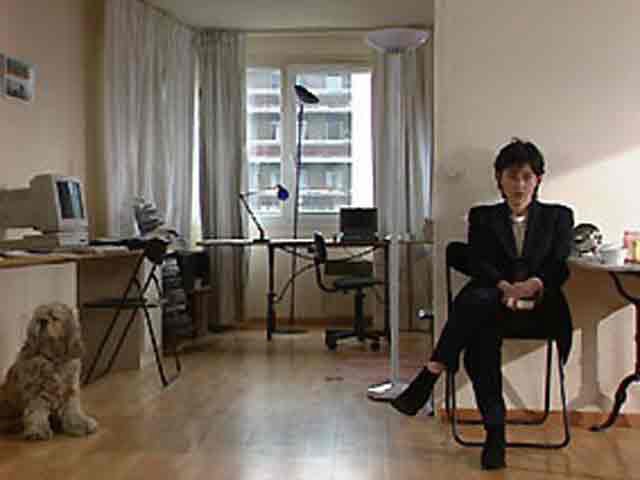
The Politics of the Everyday
A recurring theme in Akerman’s work is the politics of the everyday, with her films often focusing on the mundane aspects of daily life as a means of exploring broader social and political issues. This focus on the quotidian serves to highlight the often-overlooked experiences and perspectives of women, creating a space for the marginalized voices that are frequently excluded from mainstream cinematic discourse.
In Jeanne Dielman, 23 Quai du Commerce, 1080 Bruxelles, the meticulous depiction of the protagonist’s daily routines serves as a commentary on the invisible labor of women and the societal expectations that confine them to the domestic sphere. The film’s focus on the minutiae of daily life, from cooking to cleaning to caring for her son, underscores the protagonist’s sense of entrapment and the dehumanizing effects of domesticity.
Toute une nuit (1982) continues this exploration of the everyday, with the film’s episodic structure and its focus on ordinary people and their nocturnal encounters creating a mosaic of urban life. The film’s fragmented narrative and its emphasis on the transient and the ephemeral serve to underscore the fleeting nature of human connections and the inherent unpredictability of life.

The Poetics of Space and Light
Akerman’s films are distinguished by their exquisite visual composition, with her use of space and light serving as a means of creating atmosphere and conveying emotional resonance. Her meticulous attention to visual detail and her ability to create a sense of place are integral to her cinematic style, imbuing her films with a lyrical, almost poetic quality.
In Jeanne Dielman, 23 Quai du Commerce, 1080 Bruxelles, the stark, minimalist interiors of the protagonist’s apartment are bathed in a soft, diffused light that creates a sense of intimacy and introspection. The film’s static camera and its deliberate framing create a sense of stasis and confinement, with the carefully composed shots reflecting the protagonist’s psychological entrapment.
Les Rendez-vous d’Anna employs a similar visual language, with the film’s use of space and light creating a sense of dislocation and melancholy. The desolate, empty hotel rooms and the stark, impersonal train stations that Anna traverses serve as visual metaphors for her emotional isolation, with the film’s muted color palette and its restrained visual style enhancing its introspective tone.
Akerman’s Legacy and the Continuum of Experimentation
Chantal Akerman’s contributions to experimental cinema are inextricably linked to her exploration of the feminine psyche, her films resonating with a quiet yet profound intensity. Her legacy, a luminous thread in the tapestry of cinematic history, continues to inspire and challenge contemporary filmmakers. In the shadowy realms of the avant-garde, where the boundaries of form and content are perpetually in flux, Akerman’s voice remains a guiding light, her films a testament to the transformative power of the experimental.
Her oeuvre invites us to dwell in the interstices of the seen and the unseen, to embrace the silences and gaps that punctuate our existence. Through her meticulous craftsmanship and unwavering vision, Chantal Akerman has indelibly etched her name in the annals of cinematic innovation, her films a poignant reminder of the enduring significance of the feminine perspective in the ever-evolving landscape of experimental cinema.
The Role of Domesticity in Akerman’s Films
The theme of domesticity is pervasive throughout Akerman’s body of work, serving as both a subject of critique and a site of profound exploration. Akerman’s depiction of domestic spaces and routines is marked by a meticulous attention to detail, with her films often focusing on the minutiae of daily life as a means of delving into deeper psychological and existential themes.
In Jeanne Dielman, 23 Quai du Commerce, 1080 Bruxelles, the protagonist’s daily routines—cooking, cleaning, shopping—are depicted with a clinical precision that transforms the banal into the extraordinary. This focus on the domestic serves to highlight the repetitive, monotonous nature of the protagonist’s life, with the film’s slow, deliberate pacing mirroring the cyclical rhythm of her existence. The domestic space, with its stark, minimalist interiors, becomes a site of both confinement and resistance, with the protagonist’s meticulous routines serving as a means of asserting control over her environment.
Akerman’s exploration of domesticity extends to her portrayal of familial relationships, with her films often focusing on the complex dynamics between mothers and daughters. In News from Home, the letters from Akerman’s mother serve as a poignant counterpoint to the impersonal urban landscapes of New York City, creating a sense of intimacy and connection that contrasts with the protagonist’s sense of displacement and alienation. The film’s exploration of the mother-daughter relationship, and its focus on the domestic as a site of both comfort and constraint, underscores the centrality of domesticity to Akerman’s cinematic vision.
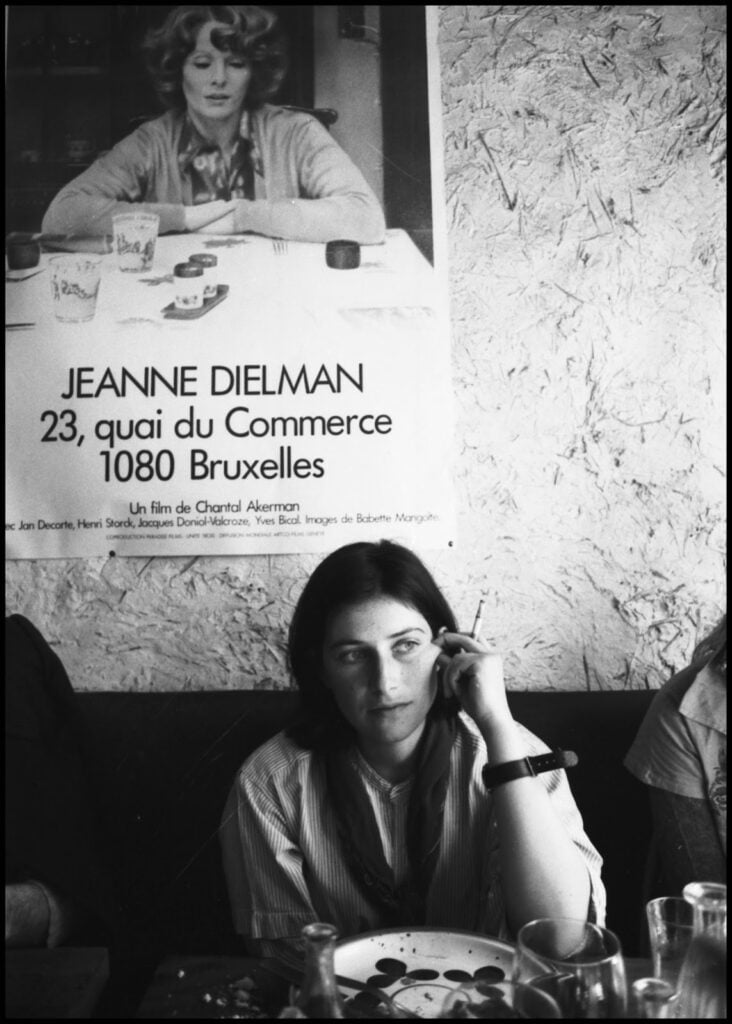
The Influence of Modernist Literature on Akerman’s Work
Akerman’s cinematic style is deeply influenced by modernist literature, with her films often characterized by a fragmented, non-linear narrative structure and a focus on interiority and subjectivity. This influence is evident in her use of voiceover narration, her exploration of memory and identity, and her emphasis on the psychological and the existential.
In Je, Tu, Il, Elle, the fragmented narrative and episodic structure reflect the disjointed nature of memory and self-perception, with the film’s introspective tone and its focus on the protagonist’s inner life echoing the themes of modernist literature. The film’s use of voiceover narration, with Akerman herself providing a detached, almost clinical commentary on the protagonist’s actions and emotions, creates a sense of distance and alienation that is characteristic of modernist fiction.
News from Home further exemplifies Akerman’s modernist sensibility, with the letters from her mother serving as a stream-of-consciousness narrative that interweaves the personal with the universal. The film’s documentary-like aesthetic and its focus on the protagonist’s internal experience create a sense of authenticity and immediacy, with the fragmented, episodic structure reflecting the fluid, nonlinear nature of memory and identity.
The Cinematic Language of Akerman: A Poetics of Minimalism
Akerman’s cinematic language is marked by a minimalist aesthetic, with her films often characterized by a sparse, restrained visual style and a deliberate, unhurried pacing. This minimalist approach serves to heighten the emotional resonance of her films, with the simplicity and austerity of the visual composition creating a sense of intimacy and introspection.
In Jeanne Dielman, 23 Quai du Commerce, 1080 Bruxelles, the minimalist interiors and static camera create a sense of stasis and confinement, with the film’s slow, deliberate pacing mirroring the protagonist’s monotonous existence. The film’s use of prolonged takes and its focus on the minutiae of daily life serve to heighten the tension and unease that underpin the protagonist’s seemingly mundane routines.
Les Rendez-vous d’Anna employs a similar minimalist aesthetic, with the film’s restrained visual style and its emphasis on the transient and the ephemeral creating a sense of melancholy and dislocation. The desolate, empty hotel rooms and the stark, impersonal train stations that Anna traverses serve as visual metaphors for her emotional isolation, with the film’s muted color palette and its deliberate pacing enhancing its introspective tone.
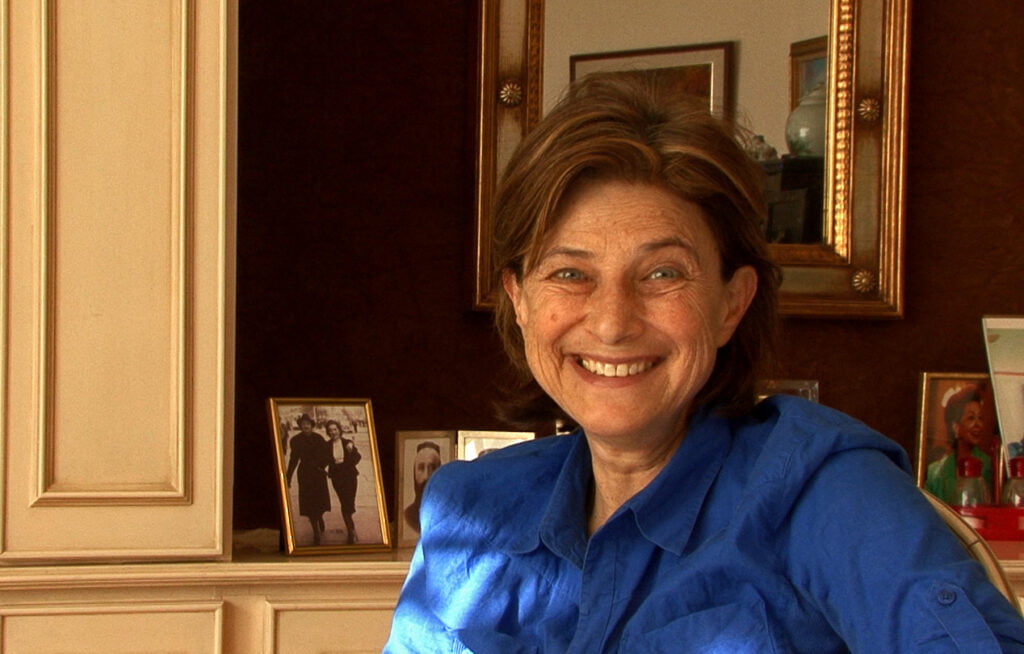
The Poetics of Absence: Exploring Silence and Void in Akerman’s Films
In Akerman’s cinematic lexicon, silence and absence are not merely the negation of sound and presence but are imbued with a profound significance that enhances the atmospheric depth and emotional texture of her films. Silence in Akerman’s work becomes a space of contemplation and a conduit for expressing the ineffable, allowing for a meditative engagement with the filmic experience.
In Jeanne Dielman, 23 Quai du Commerce, 1080 Bruxelles, silence envelops the protagonist’s domestic space, accentuating the rhythmic monotony of her daily routines. The absence of dialogue in many scenes heightens the viewer’s focus on the minutiae of her actions, creating a sense of hyper-awareness of the mundane. This strategic use of silence transforms the protagonist’s repetitive tasks into rituals, imbuing them with a ceremonial gravity that speaks to the quiet desperation of her existence.
Similarly, in News from Home, the juxtaposition of the intimate, personal voice of Akerman’s mother with the ambient noise of New York City creates a powerful dialectic of presence and absence. The letters, read in voiceover, float over images of bustling city streets, subway stations, and empty apartments, creating a haunting contrast between the protagonist’s internal emotional landscape and the external urban environment. This interplay of sound and silence serves to underscore the theme of dislocation and the poignant sense of longing and separation.
Cinematic Metaphysics: The Interplay of Light and Shadow
Light and shadow in Akerman’s films transcend mere visual elements, becoming metaphysical symbols that articulate the intricate play of presence and absence, illumination and obscurity. Her meticulous manipulation of lighting not only shapes the visual aesthetics but also deepens the thematic resonance, imbuing her films with a poetic luminosity.
In Jeanne Dielman, 23 Quai du Commerce, 1080 Bruxelles, the soft, diffused lighting creates an ethereal quality that contrasts with the stark reality of the protagonist’s life. The interplay of light and shadow within the confined domestic space reflects the protagonist’s internal struggle, with moments of illumination serving as fleeting glimpses of her suppressed desires and hidden turmoil. The careful orchestration of light within the minimalist interiors transforms the mundane into a visual symphony, capturing the delicate balance between visibility and invisibility.
Les Rendez-vous d’Anna employs a similarly nuanced approach to lighting, with the film’s use of natural light and shadow creating a sense of realism and intimacy. The transient nature of light, as it filters through train windows or illuminates empty hotel rooms, mirrors the protagonist’s fleeting encounters and transient existence. This visual poetics of light and shadow enhances the film’s exploration of solitude and displacement, imbuing the narrative with a melancholic beauty.

The Intertextuality of Akerman’s Cinema: Dialogues with Art and Literature
Akerman’s films are rich with intertextual references, drawing on a diverse array of artistic and literary influences to create a multi-layered cinematic tapestry. Her engagement with other art forms and texts adds depth and complexity to her work, creating a dialogue between cinema and other cultural expressions.
In Je, Tu, Il, Elle, the fragmented narrative and episodic structure reflect the influence of modernist literature, with the film’s introspective tone and exploration of memory and identity echoing the themes of writers like Virginia Woolf and Marcel Proust. The film’s use of voiceover narration, with Akerman herself providing a detached commentary, creates a sense of distance and alienation that resonates with the narrative techniques of modernist fiction.
News from Home can be seen as a cinematic equivalent of an epistolary novel, with the letters from Akerman’s mother serving as a narrative thread that weaves together the personal and the universal. The film’s documentary-like aesthetic and its focus on the protagonist’s internal experience create a sense of authenticity and immediacy, blurring the boundaries between autobiography and fiction.
The Feminine Poetics of Resistance
Akerman’s exploration of feminine subjectivity is imbued with a subtle yet potent poetics of resistance, challenging the dominant patriarchal narratives and creating a space for marginalized voices. Her films foreground the experiences and perspectives of women, offering a nuanced and multifaceted portrayal of female identity and agency.
Saute ma ville, Akerman’s debut film, is a radical assertion of feminine presence and agency, with the protagonist’s anarchic rebellion against domestic confinement serving as a powerful critique of patriarchal norms. The film’s frenetic energy and subversive humor deconstruct the domestic sphere, transforming it into a site of liberation and self-expression.
In Jeanne Dielman, 23 Quai du Commerce, 1080 Bruxelles, the protagonist’s meticulous routines and the oppressive silence of her domestic space serve as a commentary on the dehumanizing effects of domesticity and the invisible labor of women. The film’s slow, deliberate pacing and its focus on the minutiae of daily life create a sense of hyper-realism, with the protagonist’s actions imbued with a quiet defiance and resilience.

The Phenomenology of Akerman’s Cinema: Embodiment and Sensory Experience
Akerman’s films engage with the phenomenological aspects of cinema, exploring the sensory and embodied experience of the viewer. Her meticulous attention to visual and auditory detail creates an immersive cinematic experience that invites the viewer to engage with the film on a visceral level.
In Jeanne Dielman, 23 Quai du Commerce, 1080 Bruxelles, the prolonged takes and the focus on the protagonist’s physical actions create a sense of embodied presence, with the viewer invited to inhabit the protagonist’s domestic space and to experience her routines as a tactile and sensory reality. The film’s attention to the textures and rhythms of daily life creates a sensory landscape that is both intimate and immersive.
News from Home employs a similar phenomenological approach, with the film’s ambient sounds and lingering shots of urban landscapes creating a sensory experience that mirrors the protagonist’s emotional state. The juxtaposition of the personal voiceover narration with the impersonal urban environment creates a dialectic of presence and absence, inviting the viewer to engage with the film on both an intellectual and a sensory level.
The Intersection of Personal and Political: Akerman’s Socio-Cinematic Critique
Chantal Akerman’s films operate at the intersection of the personal and the political, using intimate, individual narratives as a lens through which to explore broader social and political issues. Her cinematic approach blends personal autobiography with incisive social critique, creating a multi-layered narrative that resonates on both a personal and a universal level.
In Jeanne Dielman, 23 Quai du Commerce, 1080 Bruxelles, the protagonist’s domestic routines serve as a microcosm of the larger societal structures that confine and oppress women. The film’s focus on the minutiae of daily life and its deliberate pacing create a sense of hyper-realism, with the protagonist’s actions serving as a silent protest against the dehumanizing effects of domesticity and patriarchal norms.
News from Home further exemplifies Akerman’s socio-cinematic critique, with the letters from her mother serving as a poignant commentary on the immigrant experience and the dislocation and alienation that accompany it. The film’s documentary-like aesthetic and its focus on the protagonist’s internal experience create a sense of authenticity and immediacy, blurring the boundaries between the personal and the political.
The Metaphysical Dimensions of Akerman’s Cinema
Akerman’s films are imbued with a metaphysical quality, exploring themes of existence, identity, and the nature of reality. Her cinematic approach often delves into the philosophical and the existential, creating a narrative that resonates on both an intellectual and an emotional level.
In Je, Tu, Il, Elle, the fragmented narrative and episodic structure reflect the disjointed nature of memory and self-perception, with the film’s introspective tone and exploration of identity echoing the themes of existential philosophy. The protagonist’s journey, both physical and emotional, is depicted with a raw, unfiltered intimacy that blurs the line between the real and the imagined, creating a complex, multi-layered narrative that invites the viewer to engage with the film on a deeply personal level.
News from Home employs a similar metaphysical approach, with the letters from Akerman’s mother serving as a narrative thread that weaves together the personal and the universal. The film’s documentary-like aesthetic and its focus on the protagonist’s internal experience create a sense of authenticity and immediacy, blurring the boundaries between autobiography and fiction.
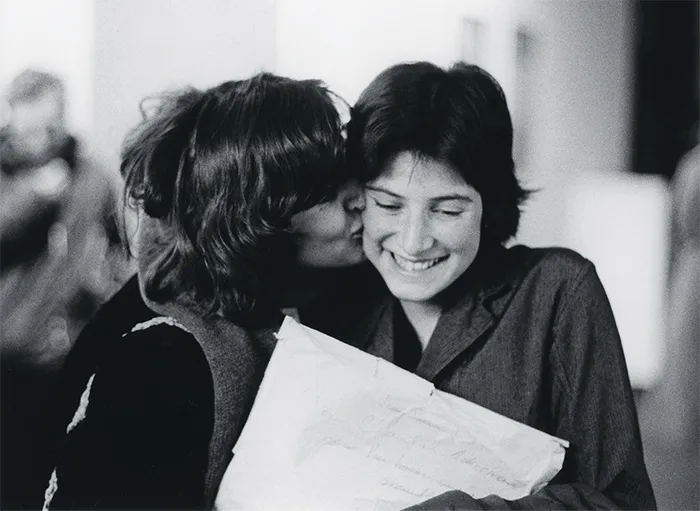
The Temporal and Spatial Dynamics of Akerman’s Cinema
Akerman’s manipulation of cinematic temporality and spatiality constitutes a cornerstone of her experimental approach. Her films often employ a durational aesthetic, characterized by extended takes and a deliberate pacing that invites the viewer to engage with time in an introspective manner. This durational approach subverts the conventional cinematic temporality, offering a counter-narrative to the frenetic pace of mainstream cinema.
In Jeanne Dielman, 23 Quai du Commerce, 1080 Bruxelles, the meticulous depiction of the protagonist’s daily routines—peeling potatoes, cleaning, cooking—unfolds in real-time, engendering a sense of temporal elongation. The extended duration of these scenes compels the viewer to experience time as an almost tactile entity, each moment laden with an existential weight. This manipulation of time serves to heighten the film’s exploration of domesticity and the latent tensions that underpin the protagonist’s existence.
Spatial dynamics in Akerman’s films are equally significant, with her use of space often functioning as a narrative device in itself. The stark, minimalist interiors of Jeanne Dielman reflect the protagonist’s internal confinement, the claustrophobic domestic space mirroring her psychological entrapment. In News from Home, the vast, impersonal urban landscapes of New York City contrast starkly with the intimate, personal nature of the letters from Akerman’s mother, creating a poignant tension between proximity and distance.
Akerman’s Contribution to Feminist Film Theory
Akerman’s work has had a profound impact on feminist film theory, with her exploration of feminine subjectivity and her subversion of traditional narrative structures challenging the patriarchal norms of mainstream cinema. Her films offer a nuanced and multifaceted portrayal of female identity and agency, creating a space for marginalized voices and perspectives.
In Saute ma ville, Akerman’s anarchic rebellion against domestic confinement serves as a powerful critique of patriarchal norms, with the protagonist’s exuberant, almost manic performance a radical assertion of presence and agency. The film’s frenetic energy and subversive humor deconstruct the domestic sphere, transforming it into a site of liberation and self-expression.
In Jeanne Dielman, 23 Quai du Commerce, 1080 Bruxelles, the meticulous depiction of the protagonist’s daily routines and the oppressive silence of her domestic space serve as a commentary on the dehumanizing effects of domesticity and the invisible labor of women. The film’s slow, deliberate pacing and its focus on the minutiae of daily life create a sense of hyper-realism, with the protagonist’s actions imbued with a quiet defiance and resilience.
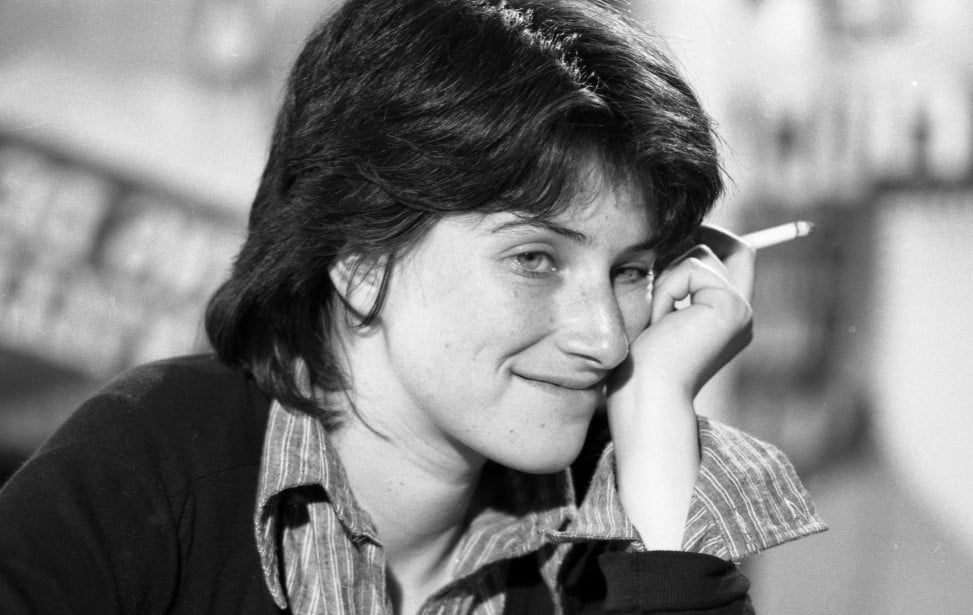
The Transcendental Dimensions of Akerman’s Cinema
Akerman’s films often engage with transcendental themes, exploring the intersection of the physical and the metaphysical, the mundane and the sublime. Her cinematic approach delves into the spiritual and the existential, creating a narrative that resonates on both an intellectual and an emotional level.
In Jeanne Dielman, 23 Quai du Commerce, 1080 Bruxelles, the protagonist’s meticulous routines and the oppressive silence of her domestic space serve as a metaphor for the transcendental dimensions of human existence. The film’s slow, deliberate pacing and its focus on the minutiae of daily life create a sense of hyper-realism, with the protagonist’s actions imbued with a quiet defiance and resilience.
In News from Home, the letters from Akerman’s mother serve as a poignant commentary on the immigrant experience and the dislocation and alienation that accompany it. The film’s documentary-like aesthetic and its focus on the protagonist’s internal experience create a sense of authenticity and immediacy, blurring the boundaries between the personal and the political.
Akerman’s Influence on Contemporary Cinema
Akerman’s contributions to experimental cinema have had a profound influence on contemporary filmmakers, with her exploration of feminine subjectivity and her subversion of traditional narrative structures inspiring a new generation of directors. Her films continue to resonate with audiences and critics alike, serving as a testament to the enduring significance of the feminine perspective in the ever-evolving landscape of experimental cinema.
Her meticulous craftsmanship and unwavering vision have indelibly etched her name in the annals of cinematic innovation, with her films serving as a poignant reminder of the transformative power of the experimental. Akerman’s legacy continues to inspire and challenge contemporary filmmakers, with her work serving as a guiding light in the shadowy realms of the avant-garde.
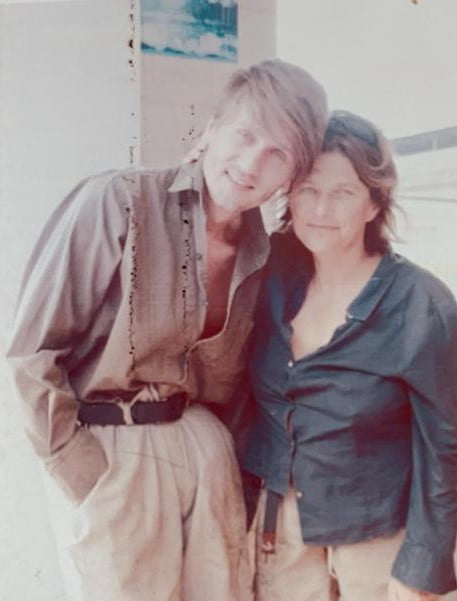
The Ethereal Aesthetics of Akerman: Visual and Auditory Poetry
Akerman’s films are characterized by an ethereal aesthetic, where visual composition and sound design coalesce to create a poetic cinematic language. This visual and auditory poetry transcends the mere representation of reality, inviting the viewer into a contemplative space where the mundane becomes imbued with a sublime resonance.
In Jeanne Dielman, 23 Quai du Commerce, 1080 Bruxelles, the film’s visual austerity, marked by its minimalist interiors and static camera, creates a sense of stasis and confinement. The soft, diffused lighting casts an ethereal glow over the domestic space, transforming the protagonist’s repetitive tasks into rituals imbued with a ceremonial gravity. This visual poetry is complemented by the film’s sound design, where the subtle diegetic sounds of the protagonist’s routines create a rhythmic pattern that mirrors the cyclical nature of her existence.
News from Home employs a similar aesthetic, with the film’s use of ambient sounds and lingering shots of urban landscapes creating a sensory experience that mirrors the protagonist’s emotional state. The juxtaposition of the intimate voiceover narration with the impersonal urban environment creates a dialectic of presence and absence, inviting the viewer to engage with the film on both an intellectual and a sensory level.
The Cinematic Lexicon of Akerman: A Semiotic Exploration
Akerman’s films are rich with semiotic complexity, employing a cinematic lexicon that is both nuanced and profound. Her use of symbols, motifs, and visual metaphors creates a multi-layered narrative that resonates on both a literal and a figurative level, inviting the viewer to engage in a semiotic exploration of her work.
In Jeanne Dielman, 23 Quai du Commerce, 1080 Bruxelles, the domestic space serves as a central symbol, representing both confinement and resistance. The protagonist’s meticulous routines and the oppressive silence of her domestic space serve as a commentary on the dehumanizing effects of domesticity and the invisible labor of women. The film’s slow, deliberate pacing and its focus on the minutiae of daily life create a sense of hyper-realism, with the protagonist’s actions imbued with a quiet defiance and resilience.
News from Home employs a similar semiotic approach, with the letters from Akerman’s mother serving as a narrative thread that weaves together the personal and the universal. The film’s documentary-like aesthetic and its focus on the protagonist’s internal experience create a sense of authenticity and immediacy, blurring the boundaries between autobiography and fiction. The juxtaposition of the personal voiceover narration with the impersonal urban environment creates a dialectic of presence and absence, inviting the viewer to engage with the film on both an intellectual and a sensory level.
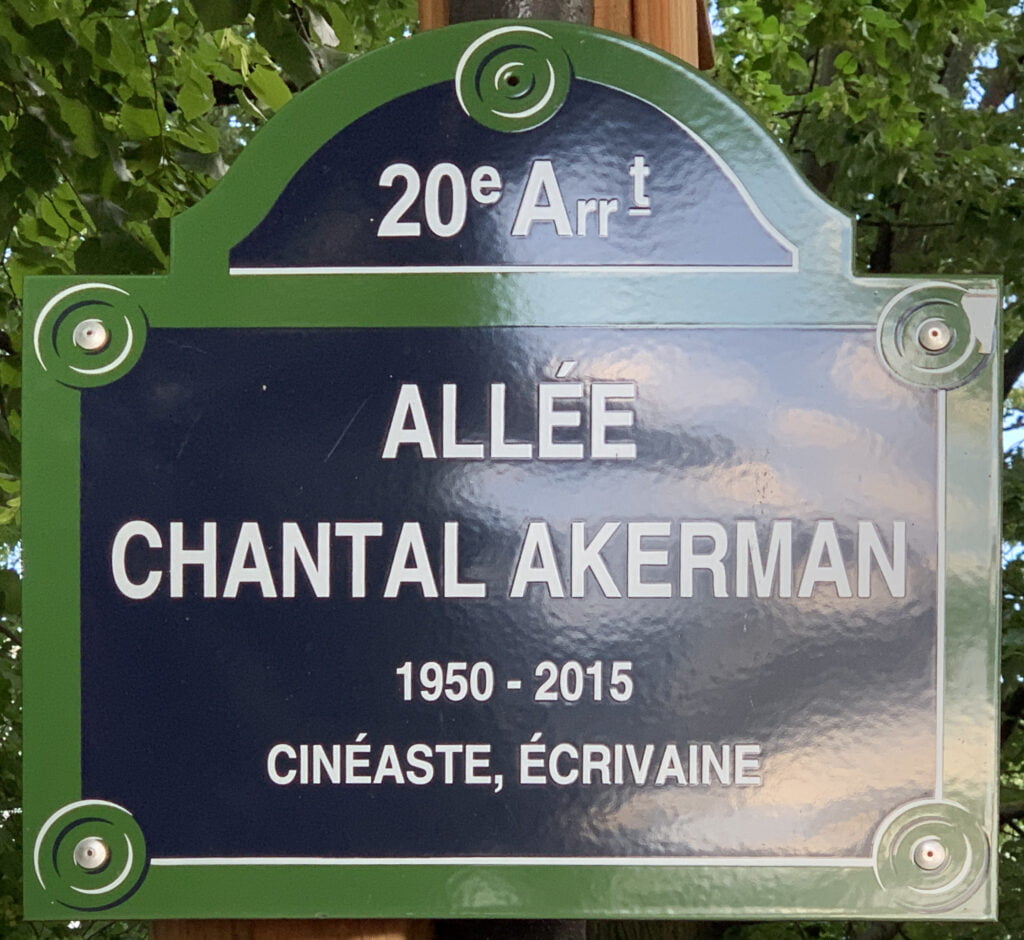
Conclusion: The Enduring Legacy of Chantal Akerman
Chantal Akerman’s contributions to experimental cinema have left an indelible mark on the film industry, with her innovative approach to narrative structure, her exploration of feminine subjectivity, and her meticulous attention to visual and auditory detail setting her apart as a pioneering figure in the world of avant-garde cinema. Her films continue to inspire and challenge contemporary filmmakers, serving as a testament to the transformative power of the experimental.
Akerman’s legacy is characterized by her unwavering commitment to exploring the complexities of human existence, with her films offering a profound and nuanced portrayal of identity, memory, and the human condition. Her work serves as a poignant reminder of the enduring significance of the feminine perspective in the ever-evolving landscape of experimental cinema, with her meticulous craftsmanship and visionary approach continuing to resonate with audiences and critics alike.
In the shadowy realms of the avant-garde, Chantal Akerman’s films shine as a beacon of innovation and introspection, inviting viewers to embark on a cinematic journey that transcends the boundaries of time, space, and conventional narrative. Her legacy endures, a guiding light for future generations of filmmakers and a testament to the transformative power of the experimental.
